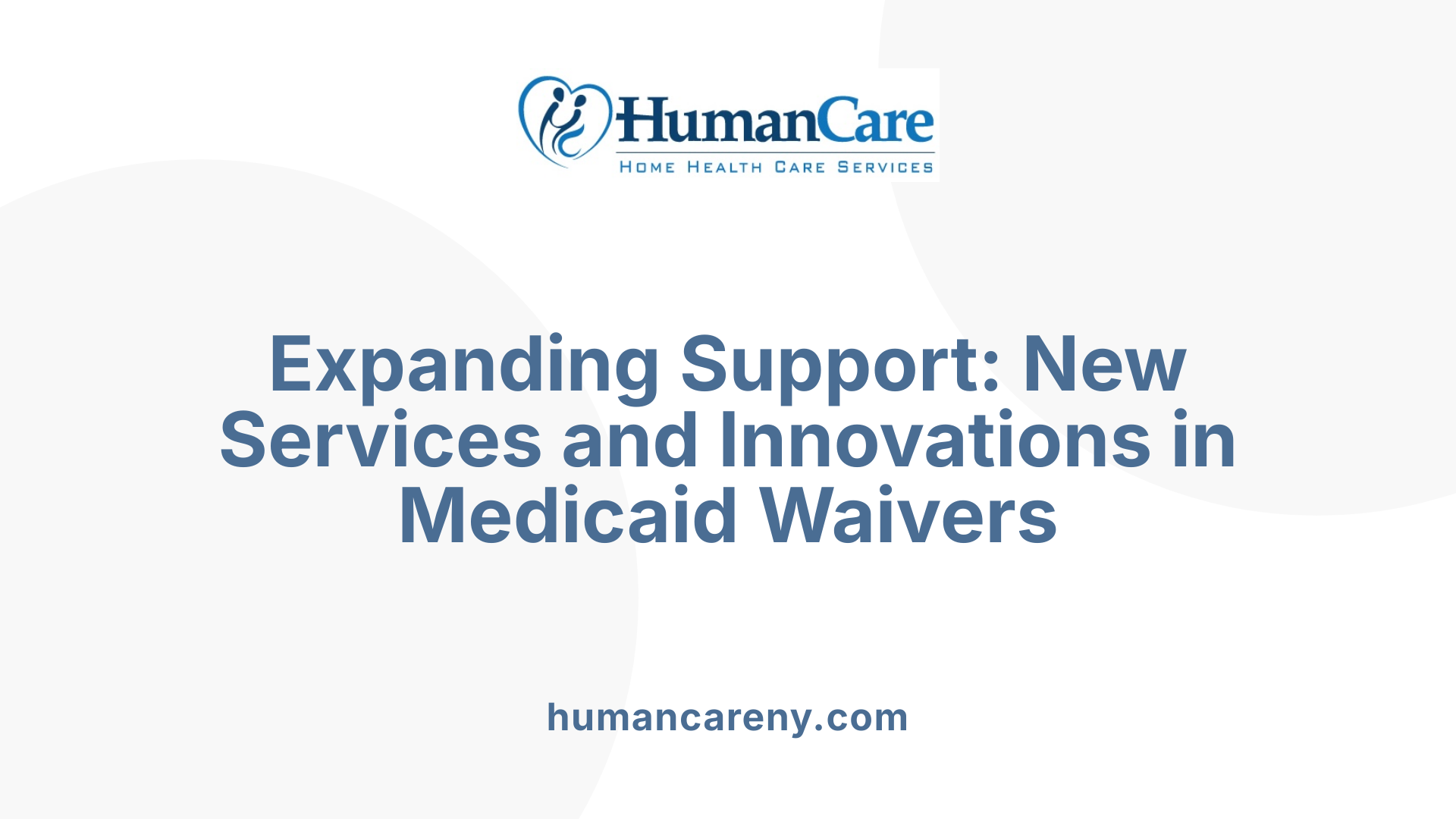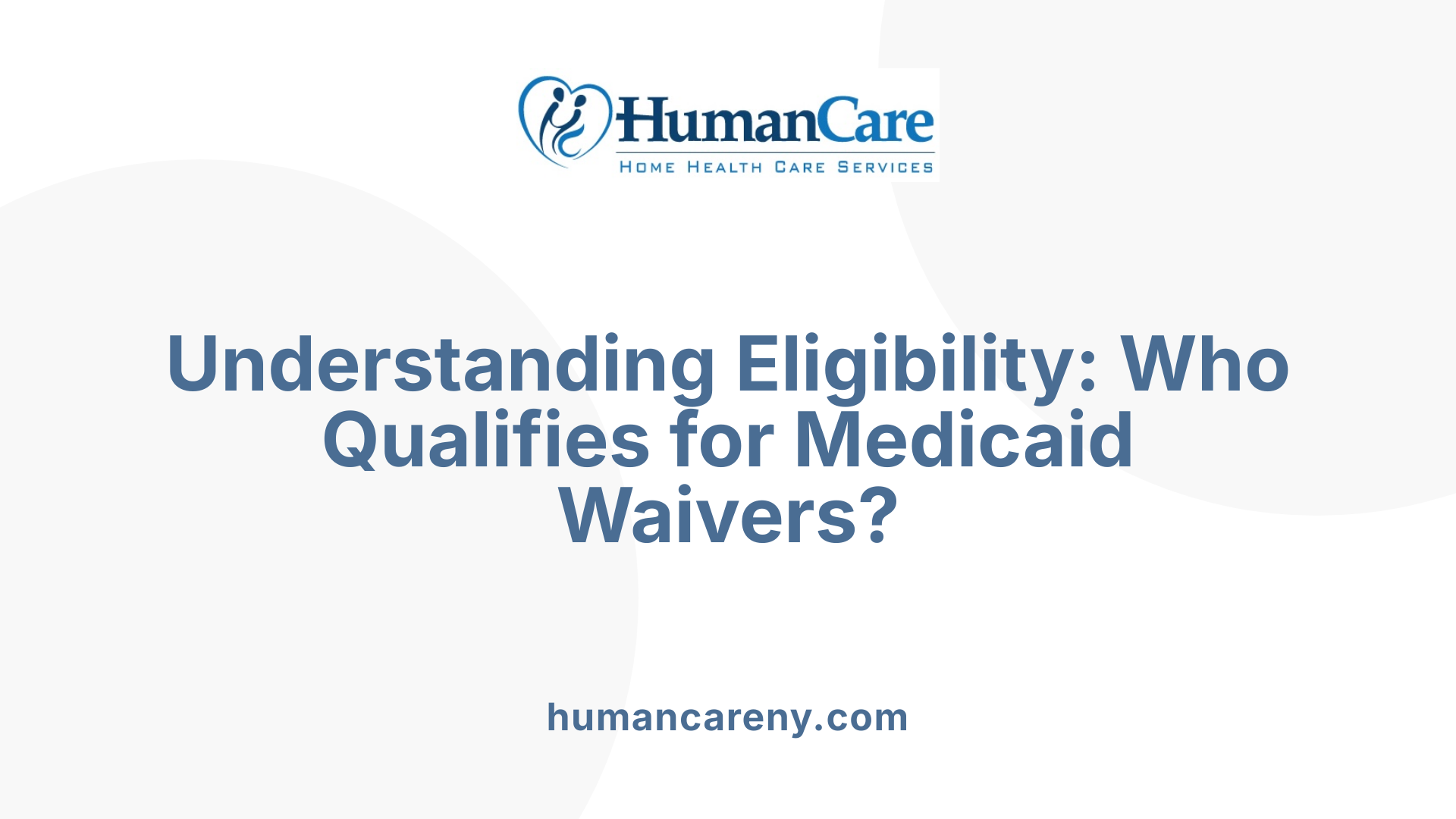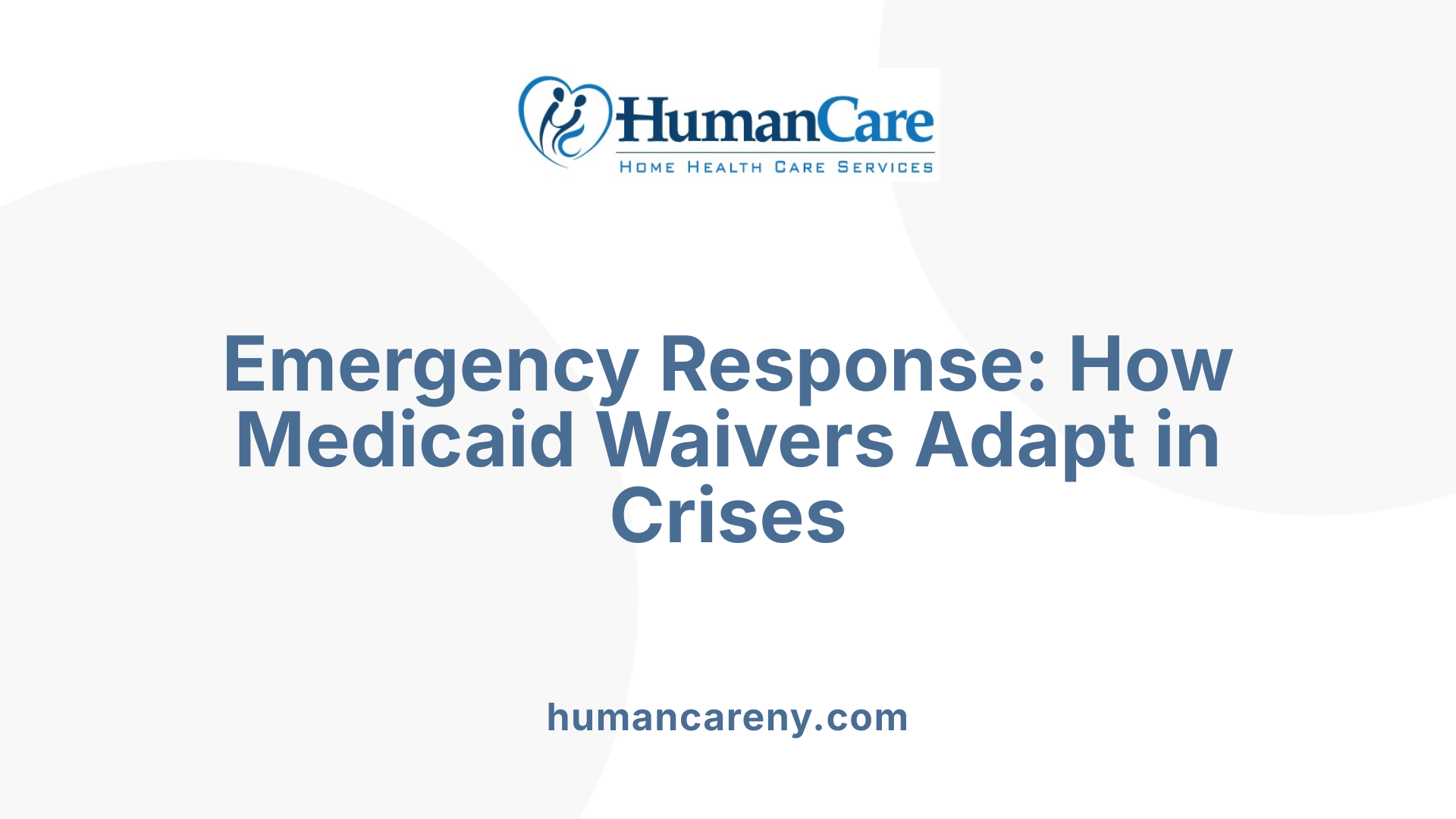Understanding Medicaid Waivers and Their Impact
Medicaid waiver programs have become pivotal in supporting individuals with disabilities to live independently and fully participate in their communities. By waiving certain traditional Medicaid rules, these programs allow states to provide in-home and community-based services tailored to the unique needs of individuals, helping them avoid institutional care and maintain family and community connections. This article explores the benefits, structure, and evolving landscape of Medicaid waiver programs for people with disabilities.
Origins and Purpose of HCBS Waiver Programs
What are Medicaid waiver programs and how did they originate?
The Home and Community-Based Services (HCBS) Waiver program began in 1981 as a groundbreaking federal initiative to allow individuals with disabilities to receive care in their own homes and communities rather than in institutional settings. This shift was driven by the goal to support greater independence and help individuals maintain strong connections with their families and local communities.
Historically, Medicaid primarily covered care in institutional settings, but the HCBS Waiver changed that by providing states the option to offer a broad range of in-home and community-based services. This was designed to give people with disabilities more choices and control over their care, fostering integration and participation in everyday life.
Through these waivers, states can tailor programs to meet the needs of people who might otherwise require costly institutional care, encouraging person-centered and community-focused approaches. The HCBS Waiver program remains a cornerstone in promoting disability rights and improving quality of life by supporting autonomy within familiar and meaningful environments.
How Medicaid Waivers Enable In-Home and Community Care
How do Medicaid waivers support in-home and community care for people with disabilities?
Medicaid waivers are essential tools that allow states to offer customized support to individuals with disabilities living in their communities. By waiving certain federal Medicaid rules, states can fund services like home care, transportation, and therapies that standard Medicaid does not usually cover. This flexibility means individuals can receive care at home or in community settings that meet their unique needs.
Flexibility in Care Settings
Unlike traditional Medicaid, which often limits services to clinical or institutional environments, Medicaid waivers encourage provision of care in more integrated settings. Services are designed to be person-centered and may include adult day programs, assistive technologies, and employment supports. Telehealth options and flexible delivery methods have also been introduced to make access to these services easier and more convenient for recipients.
Comparison to Traditional Medicaid
Traditional Medicaid programs generally focus on hospital or facility-based care with strict eligibility and service restrictions. Medicaid waivers break these barriers by allowing supports that promote independent living, such as case management and home-based therapies. These waivers enable ongoing, lifelong support tailored to individual preferences and goals.
Emphasis on Community Integration
Federal Centers for Medicare & Medicaid Services (CMS) regulations emphasize that Home and Community-Based Services (HCBS) must foster integration into the community. The goal is to ensure that individuals with disabilities enjoy full access to social, educational, and recreational opportunities alongside their peers without disabilities. Programs like California’s HCBS Waiver and Self-Determination Program exemplify this focus by providing choices that empower people to control their services and remain connected to family and friends.
| Aspect | Traditional Medicaid | Medicaid Waivers |
|---|---|---|
| Care Settings | Often institutional | Home and community-based |
| Service Scope | Limited to standard medical care | Includes therapies, assistive tech, employment supports |
| Eligibility | Stringent and uniform | Can have varied criteria including medical necessity and daily living activities |
| Flexibility | Lower | Higher, allowing self-direction and adaptations |
| Community Integration | Less emphasis | Strong emphasis per CMS regulations |
This modern approach through Medicaid waivers helps individuals with disabilities live safely and comfortably in their communities, enhancing their quality of life and autonomy.
Federal Guidelines and Quality Standards Under CMS
What federal regulations govern Medicaid waiver programs to ensure quality care?
The Centers for Medicare & Medicaid Services (CMS) has established regulations that govern Medicaid Home and Community-Based Services (HCBS) waivers to guarantee quality and community integration. These rules focus not just on where services are provided, but significantly on the quality of the care experience and how well services support full access to community life.
CMS regulations require that HCBS waivers be offered in settings that are integrated into the community and promote independence. The goal is to prevent isolation and institutionalization by ensuring that individuals with disabilities fully participate in everyday social, civic, and economic activities.
These federal standards emphasize person-centered care, giving individuals greater control over their own services. Care plans must be tailored to the preferences and needs of the person, supporting their autonomy and choice.
Ultimately, CMS’s regulatory framework strengthens the quality of life for waiver participants through quality oversight, community integration, and respect for individual preferences. These guidelines ensure that HCBS programs provide more than just physical care—they foster meaningful community connections and independence.
Different Types of Medicaid Waiver Programs: 1915(c) and 1915(i)

What are the main types of Medicaid waivers available for individuals with disabilities?
Medicaid offers specific waivers to enhance in-home and community-based services for people with disabilities, notably the 1915(c) waiver and the 1915(i) State Plan Program.
Description of 1915(c) waiver
The 1915(c) waiver is a traditional Medicaid waiver that provides flexible home and community-based services. It aims to support individuals who would otherwise require institutional care by allowing them to live independently in the community. States develop these waivers following federal guidelines and target populations with complex care needs. Eligibility for the 1915(c) waiver typically involves medical necessity, functional assessments, and financial criteria. The program funds a broad range of services such as case management, home care, therapies, transportation, and employment supports.
Features of the 1915(i) State Plan Program
The 1915(i) program is offered under the Medicaid State Plan and provides similar community-based services but with less stringent eligibility requirements compared to 1915(c). This approach expands access to a broader group of individuals who might not meet the strict criteria of the 1915(c) waiver. It offers more flexibility in eligibility and can include services such as assistive technology and specialized therapies. Because it is part of the state plan, states can implement 1915(i) without the need for a waiver approval process, facilitating quicker access to services.
Eligibility differences
While both programs promote community living and tailored supports, the main distinction lies in eligibility. The 1915(c) waiver requires states to meet specific and often stricter eligibility standards such as a higher level of medical necessity. On the other hand, the 1915(i) State Plan Program allows states to set more flexible criteria to include individuals who might otherwise be ineligible under 1915(c). This difference makes the 1915(i) program a vital option for expanding service access to a wider population.
Overall, these two Medicaid waiver programs complement each other in supporting independence and enhancing quality of life for individuals with disabilities through coverage of diverse home and community-based services.
Funding and State-Level Implementation: The Case of California
How do states fund and implement Medicaid waiver programs?
States develop their own Home and Community-Based Services (HCBS) waivers following federal guidelines, with substantial support from federal funding. This approach allows states to tailor services that promote community living for individuals who need supports beyond what traditional Medicaid covers.
Federal Funding Support
Federal funding plays a pivotal role in enabling states to offer these personalized services. For example, Medicaid waivers allow federal authorities to waive standard Medicaid rules, thereby permitting states to provide in-home care and community-based supports often not covered under regular Medicaid.
Renewal and Funding Cycles
An illustrative example is California's HCBS waiver renewal effective January 1, 2023. This renewal secured approximately $3 billion in federal funding designated for regional center services. Such funding cycles ensure continuity and expansion of services, helping individuals with disabilities live safely and participate actively in their communities.
State Adaptations and Improvements
California has also incorporated rate increases, new service offerings, additional provider types, and flexible service delivery methods like telehealth in its HCBS waiver program. These enhancements aim to improve both the quality and accessibility of in-home and community-based services.
The state's ability to adapt and enhance its HCBS offerings while maintaining federal compliance highlights a strong model for balancing regulatory frameworks with local needs and innovations.
| Aspect | Description | Example from California |
|---|---|---|
| Federal Support | Provides funding and regulatory waivers to enable flexible service delivery | $3 billion renewal funding in 2023 |
| State Development | States create waiver programs aligned with federal guidelines | California's tailored regional center services |
| Program Enhancements | Includes added services, provider options, and delivery flexibility like telehealth | Expanded services and rate increases in California |
Through strategic use of federal funds and innovative state adaptations, California exemplifies effective implementation of Medicaid HCBS waivers, ensuring vital supports reach individuals with disabilities in their homes and communities.
Expanding Service Options Through Medicaid Waivers

What types of services can Medicaid waivers provide to individuals with disabilities?
Medicaid waivers offer a comprehensive range of services designed to support individuals with disabilities to live independently and engage fully in their communities. These services include case management, transportation assistance, home care, adult day services, and employment supports. Additionally, assistive technology devices and therapies such as speech, occupational, and physical therapy are also provided to meet varied needs.
Innovations such as telehealth
Recent advancements have led to the integration of flexible delivery methods within Medicaid waivers. Telehealth services have been introduced as part of California’s HCBS waiver and state plan amendments to increase accessibility, especially for those who may face barriers attending in-person appointments. This innovation ensures that individuals continue to receive quality care conveniently and safely.
Provider flexibility
Medicaid waivers also enhance choice and flexibility in service delivery. New provider types have been authorized, broadening options for individuals seeking supports. This provider flexibility reinforces person-centered care by allowing individuals or their families to select providers best suited to their preferences and needs, thus promoting better outcomes and satisfaction with services.
The Self-Determination Program: Empowering Choice and Control
Introduction and goals of the SDP
The Self-Determination Program (SDP), enacted in 2013 and rolled out in California starting 2021, is designed to give individuals with disabilities and their families greater autonomy over their care. Unlike traditional Medicaid waiver services that can be more rigid, SDP encourages participants to make choices that align with their lifestyles, preferences, and long-term goals.
Person-centered planning
At the heart of SDP is person-centered planning, which allows individuals or their families to actively design and manage their own services. This planning process is tailored to the specific needs and desires of the participant rather than a one-size-fits-all model. Through SDP, participants can select the types of services, providers, and supports that best fit their personal situation, allowing for a flexible and responsive approach to care.
Community integration
A major focus of the Self-Determination Program is promoting community inclusion and connection. By offering participants more control over their support services, SDP encourages participation in community activities, employment, education, and social opportunities. This not only fosters independence but also helps maintain meaningful relationships within the community, enhancing quality of life.
How does the Self-Determination Program enhance Medicaid waiver benefits?
The SDP enhances Medicaid waiver benefits by shifting decision-making power to individuals and their families, promoting choice and control over care. This empowerment leads to increased independence and supports fuller integration into the community. Participants are better able to direct their own supports in a way that meets their unique needs, making HCBS services more effective and personally meaningful.
Eligibility Criteria for Medicaid Waiver Programs

What eligibility requirements must individuals meet for Medicaid waiver programs?
Eligibility for Medicaid waiver programs is carefully determined based on multiple factors to ensure that those who truly need services can benefit.
One major criterion is medical necessity. Individuals must demonstrate a need for services that help manage their health and support their daily functioning. This often involves an evaluation by medical professionals to assess the level of care required.
Another important factor is the evaluation of an individual's ability to perform activities of daily living (ADLs). This includes essential tasks such as bathing, dressing, eating, and mobility. If a person has significant difficulties with these activities, they may qualify for waiver services to support their independence.
The diagnosis of the individual is also a consideration. While many waivers focus broadly on developmental disabilities, some states offer autism-specific waivers providing tailored services. In states without such specialized waivers, autism is generally included under the umbrella of developmental disabilities.
Lastly, financial criteria must be met, ensuring that the waiver program serves those with limited income and resources who require assistance beyond what they can afford.
Overall, these combined eligibility requirements help states prioritize individuals with significant support needs to live safely and independently within their communities.
Navigating the Application and Waitlist Process
What Does the Application Process for Medicaid Waivers Involve?
Applying for Medicaid waivers begins with a thorough medical evaluation and an assessment of an individual's care needs. These assessments determine eligibility based on medical necessity, diagnosis, and the ability to perform daily living activities. The goal is to identify those who require supports and services to live safely and independently in their communities.
Challenges with Limited Spots
A significant challenge in the application process is the existence of limited spots in waiver programs. Due to funding caps and state-specific regulations, many applicants face long waitlists. These delays can be frustrating for families seeking immediate support, as individuals may have to wait months or even years before services begin.
State-Specific Variations
States develop and manage their waiver programs following federal guidelines, leading to variations in eligibility criteria, available services, and the application process itself. Some states have specific waivers targeting autism, while others include it under broader developmental disability categories. These differences impact waitlist lengths and which services applicants can access.
Families awaiting service approval are encouraged to seek alternative supports such as Supplemental Security Income (SSI), the Supplemental Nutrition Assistance Program (SNAP), transportation assistance, employment supports, therapies, and assistive technology programs. These options help bridge the gap until waiver services become available.
Overall, while the application process aims to carefully match services to individual needs, the reality of limited program capacity requires patience and resourcefulness from applicants and their families.
Supporting Families During Waiver Wait Times
What support options are available for families while waiting for Medicaid waiver services?
Families awaiting access to Medicaid HCBS waivers for their loved ones with disabilities often face long wait times due to limited spots and varying state regulations. During this period, several alternative support options can provide valuable assistance.
Federal programs like Supplemental Security Income (SSI) offer financial assistance to individuals with disabilities, helping to meet basic needs. The Supplemental Nutrition Assistance Program (SNAP) supports families in obtaining sufficient food, contributing to overall well-being.
Beyond financial programs, various community and federal services focus on enhancing quality of life and skill development. These include transportation services, employment supports to foster independence, and a range of therapies such as speech, occupational, and physical therapy. Assistive technology programs also provide tools that promote autonomy and facilitate daily activities.
Engaging with these resources can help families manage care needs while navigating the Medicaid waiver application process. Early utilization of available supports ensures continuous assistance and helps maintain stability during the wait for comprehensive in-home or community-based services.
Person-Centered Service Delivery and Flexibility
How do Medicaid waivers ensure person-centered care and flexibility?
Medicaid waivers provide services that are tailored to the unique needs and preferences of individuals receiving care. These programs empower participants to direct their own care, giving them greater choice and control over the services they receive. For those who prefer assistance, service coordinators play a key role by collaborating with individuals and their families to plan, organize, and manage support services effectively.
This approach ensures that care plans are not static but adaptable to the changing needs of each person. Participants have explicit rights to change service providers if their current services do not meet their expectations or needs. Additionally, there is a clear process to appeal service plans, offering individuals a voice in ensuring that the support they receive aligns with their personal goals and circumstances.
Overall, the flexibility embedded in the Medicaid waiver programs promotes independence and enhances the quality of life by respecting individual choices and providing responsive support systems within home and community settings.
Medicaid Waivers and Lifelong Supports for Autism
How do Medicaid waiver programs support individuals with autism and their families?
Medicaid Home and Community-Based Services (HCBS) waivers play a crucial role in supporting individuals with autism and their families. These waivers provide lifelong supports that enable people to live safely in their homes and actively participate in their communities.
Through Medicaid waivers, individuals with autism can access a wide array of tailored services designed to foster independence and improve quality of life. These services include case management, home care, therapies such as speech and occupational therapy, employment supports, assistive technology, and transportation.
Waiver programs emphasize person-centered care, allowing individuals and their families to have control over their service plans and the option to choose or change providers. This flexibility helps ensure that the supports meet the unique needs of each person.
In addition to enhancing safety and well-being, Medicaid waivers promote community integration by enabling participation in social, educational, and employment activities. The programs also offer crucial help during emergencies and public health challenges through temporary amendments, ensuring uninterrupted support.
By easing the reliance on institutional care, Medicaid waivers make it possible for individuals with autism to maintain connections with family and friends and enjoy a greater quality of life within their communities.
Adapting Medicaid Waivers to Emergency Situations

How do Medicaid waiver programs respond to emergencies to ensure continuous support?
Medicaid Home and Community-Based Services (HCBS) waiver programs have built-in flexibility to respond effectively during emergencies. Temporary emergency amendments, like Appendix K, have been specifically designed to address service disruptions caused by natural disasters, public health emergencies, or other crises.
Temporary Emergency Amendments Such as Appendix K
Appendix K allows states to quickly adjust service delivery requirements, provider qualifications, and other program elements to maintain continuity of care during emergencies. These amendments enable service providers to use alternative methods such as telehealth, modify service staffing, or extend service authorization periods without compromising the safety and well-being of individuals with disabilities.
Maintaining Service Continuity
During critical events, maintaining uninterrupted access to in-home and community-based services is crucial. By leveraging these emergency provisions, Medicaid waivers ensure that vulnerable populations continue to receive essential supports such as personal care, therapies, transportation, and case management even when standard service delivery models are impacted.
Response to Natural Disasters and Public Health Crises
These emergency adaptations provide necessary flexibility to respond dynamically to unforeseen situations like wildfires, floods, or pandemics. They allow service systems to innovate and prioritize the health and safety of individuals with disabilities while preserving their autonomy and community integration.
Through these responsive measures, Medicaid waiver programs protect and uphold the well-being of people with disabilities during times of crisis, ensuring that critical services remain accessible and effective.
The Role of Medicaid as a Joint Federal-State Program
What is the structure of Medicaid and its role in funding waiver programs?
Medicaid operates as a partnership between the federal government and individual states, creating a framework that combines federal oversight with state-level administration. This structure allows for flexibility in tailoring services to the needs of different populations, particularly people with disabilities.
The federal government provides a significant portion of funding to states, ensuring the availability of resources for health benefits, including for those with autism spectrum disorder and other developmental disabilities. States, in turn, use this funding to administer Medicaid programs based on federal guidelines but with varying specifics and services.
One of Medicaid’s crucial roles is funding Home and Community-Based Services (HCBS) waiver programs, which offer alternatives to institutional care. These waivers enable states to provide in-home and community supports that help individuals live more independently and maintain connections with their families and communities.
Through these waivers, states receive federal approval to waive certain Medicaid rules to cover services not typically included under standard Medicaid. This flexibility promotes a person-centered approach, offering a broader range of supports and fostering community integration for individuals with complex needs.
An emphasis on collaboration ensures that while the federal government oversees program integrity and compliance, states retain the authority to develop and implement waiver programs that best serve their residents’ unique needs. This joint effort is essential in advancing the quality and accessibility of health services for people with disabilities nationwide.
Benefits of Community-Based Services Over Institutional Care
Why are community-based services through Medicaid waivers preferable to institutional care?
Community-based services under Medicaid waivers offer individuals with disabilities the opportunity to live in familiar surroundings like their own homes and communities. This setting supports greater independence and enables them to maintain strong connections with family and friends.
Quality of life improvements
Living in a home or community setting significantly enhances daily experiences and overall well-being. People enjoy personalized care tailored to their specific needs while retaining control over their lives. The Self-Determination Program further encourages individuals to select and manage their services, fostering autonomy and satisfaction.
Social integration
Being cared for in the community allows individuals to participate in social activities, community programs, and employment opportunities. This integration minimizes isolation seen in institutional settings and promotes a sense of belonging and engagement, critical for mental and emotional health.
Cost-effectiveness
Medicaid waivers enable states to provide targeted support through flexible programs such as California’s HCBS waiver, which includes telehealth and other innovative service delivery methods. These approaches not only improve accessibility and quality but often reduce the costs associated with institutional care by supporting people in less restrictive, less expensive environments.
Overall, community-based services blend quality care with greater personal freedom and social inclusion while being mindful of public resources—making them a preferable alternative to institutionalization for many individuals with disabilities.
Innovations in Delivery and Service Expansion
What recent innovations have been introduced in Medicaid waiver programs?
Medicaid waiver programs have recently seen several important innovations aimed at enhancing the quality and accessibility of services for individuals with disabilities. One notable advancement is the increased use of telehealth, which allows individuals to receive certain therapies and supports remotely. This flexible delivery method is particularly valuable for those in rural areas or with transportation challenges.
In addition to telehealth, programs have expanded to include new types of services that address a broader range of needs. Provider diversity has also increased, welcoming various professionals and organizations to participate in delivering care.
Rate increases have been implemented to fairly compensate providers, which encourages higher quality services and helps ensure a stable workforce.
Together, these innovations help make Medicaid waiver programs more person-centered by offering tailored options, promoting independence, and facilitating better community integration for those living with disabilities.
Challenges and Future Directions for Medicaid Waiver Programs
What challenges do Medicaid waiver programs face and what are future priorities?
Medicaid waiver programs, including the Home and Community-Based Services (HCBS) waivers, face significant challenges that impact both individuals seeking services and policymakers working to optimize care delivery. One of the most persistent issues is managing long waitlists. Due to limited spots and complex, state-specific eligibility criteria, many individuals and families experience lengthy delays before accessing essential supports.
Ensuring equitable access remains a top priority, as eligibility and services vary widely across states. Some states offer autism-specific waivers, while others include autism within broader developmental disability categories. This disparity can affect the availability and quality of services individuals receive depending on their state of residence.
Another challenge is adapting services to meet the diverse and changing needs of individuals with disabilities. Programs must balance providing person-centered care — including options for individuals to direct their own services — while maintaining consistency and quality across providers.
Looking ahead, future priorities focus on expanding program capacity to reduce wait times and improve accessibility. Enhancing person-centered approaches, like the Self-Determination Program, will empower individuals and families with increased control over their care options.
Ongoing collaboration between federal and state agencies is crucial. Federal guidelines and funding support states in innovating service delivery, such as incorporating telehealth and flexible methods of support, while ensuring compliance with regulations that emphasize community integration and quality experience.
This multifaceted approach aims to optimize Medicaid waiver effectiveness, ensuring individuals with disabilities can live safely, independently, and fully participate in their communities.
A Path Forward to Greater Independence and Inclusion
Medicaid waiver programs have revolutionized care for individuals with disabilities by prioritizing community living, personal choice, and comprehensive supports. With ongoing innovations and sustained funding, these programs continue to enhance quality of life and foster true inclusivity. As states and the federal government strengthen collaboration and address challenges like waitlists and service accessibility, the promise of living independently and fully participating in community life becomes a growing reality for many people with disabilities.



